culture, japanese food, Kyoto
What is Nagashi Somen? Japan’s Unique Dining Experience
Linh Le
Posted on August 31, 2022
Share:
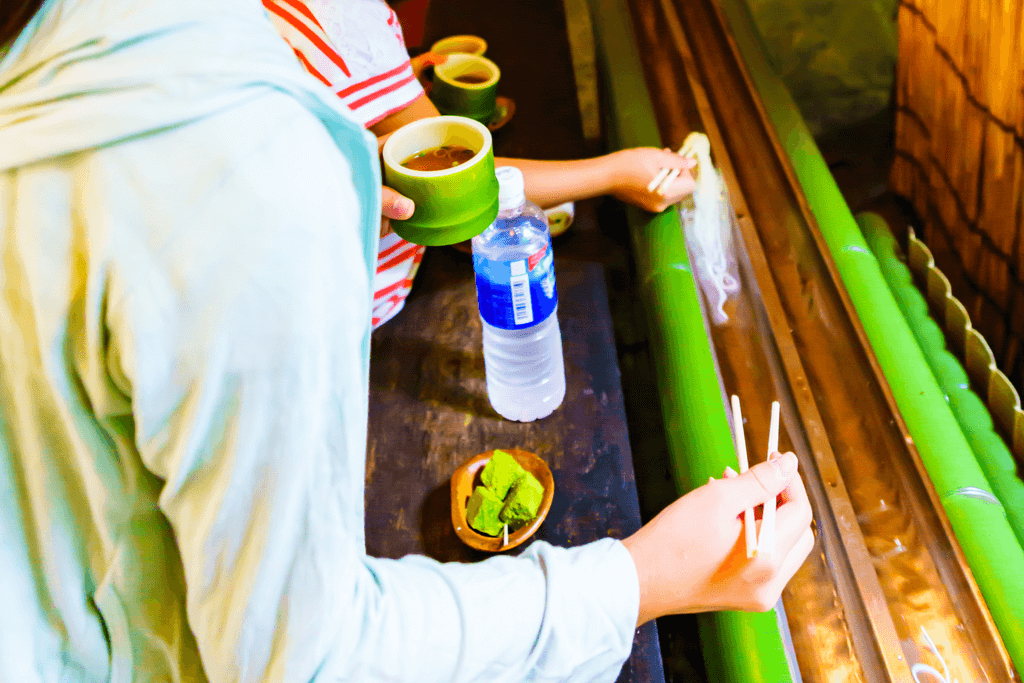
When the air temperature and humidity rise in summer, it’s easy to lose your appetite, a standard part of summer fatigue. Now, all you need is a mild, refreshing dish to help calm your upset body from the unpleasant hot weather. Summer in Japan will never be complete without trying cool nagashi somen – Japanese flowing noodles.
You may have heard of thin Japanese noodles, but nagashi somen is a simple summer dish and a unique culinary experience that both adults and children love to enjoy!
What is nagashi somen?
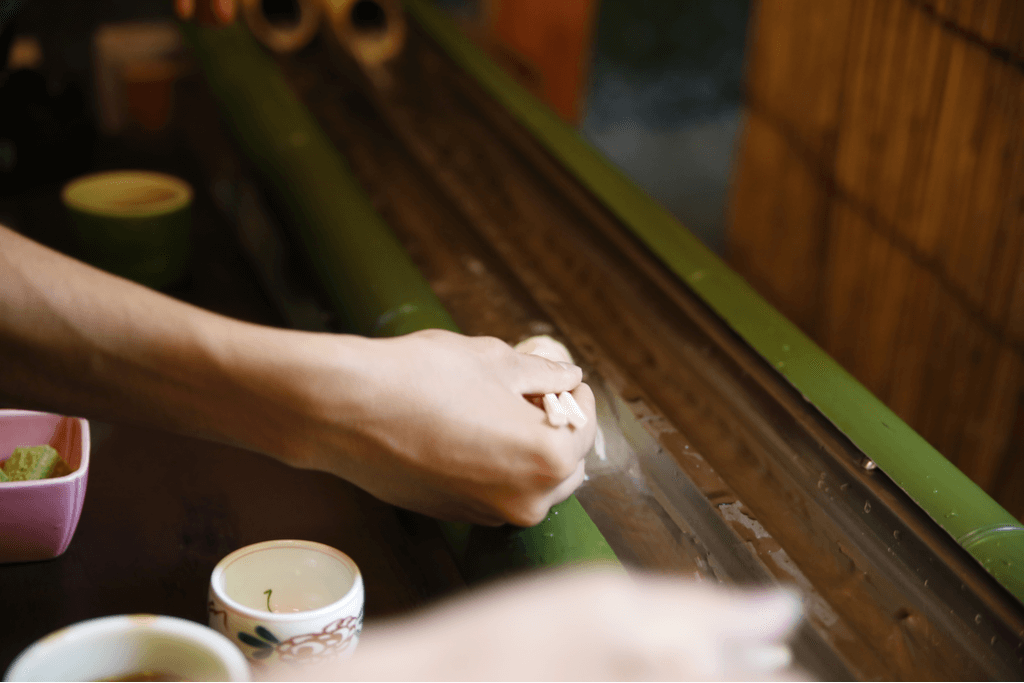
Somen is a soft, white, wheat flour noodle. It’s thinner in diameter than ramen and less than 1.3mm in thickness. However, one of the most exciting variations is nagashi somen (nagashi meaning “flow” in Japanese. Usually, niche restaurants serve it via a bamboo tube filled with cold water.
This bamboo trough’s position is at an angle from high to low to create a flow. This allows the thin somen noodles to flow easily along the cool water. You must use your agile chopstick control skills and ingenuity to “catch” these noodles. Then, soak the noodles in a cold tsuyu broth and slurp them down to enjoy the traditional Japanese summer flavor.
Tsuyu broth is usually a mix of soy sauce, fish broth, and a bit of sake, so it has a delightful savory flavor that goes perfectly with the fresh, cold noodles. You can also add scallions, ginger, myoga (Japanese ginger), wasabi (Japanese horseradish), or even shikuwasa citrus to the tsuyu sauce to change the taste. The staff will send down red or pink noodles when the service is almost up. Then visitors will put down their chopsticks to enjoy dessert with mochi (Japanese pounded rice cakes) and tea.
Looking for some traditional Japanese snacks and sweets to refresh your day? Check out Sakuraco! Sakuraco delivers traditional Japanese snacks, teas, sweets, and snacks from local Japanese makers directly to your door, so you can enjoy an authentic and refreshing Japanese treat right at home!
Is it hard to eat nagashi somen?
Nagashi somen is a dish that helps to cool down the body in the hot Japanese summers. This is because somen noodles are thin and flow easily with water. Diners who want to receive the noodles must stand on either side of the bamboo trough and use quick speed and reasonable chopstick control to catch the noodles. This makes the meal more vibrant and fun than the typical Japanese restaurant experience.
For those who don’t know how to use chopsticks, picking up each roll of noodles may not be easy. However, this is one of the exciting and unique experiences that everyone should try at least once. You will truly get to feel the uniqueness of Japanese culinary culture.
Although a nagashi somen party can be held in your backyard, it is pretty challenging to prepare the bamboo tube, so many families make their own nagashi Somen dining table by hand using milk cartons or plastic bottles. In Japan, a tiny machine called the Big Stream Somen Slider is sold online.
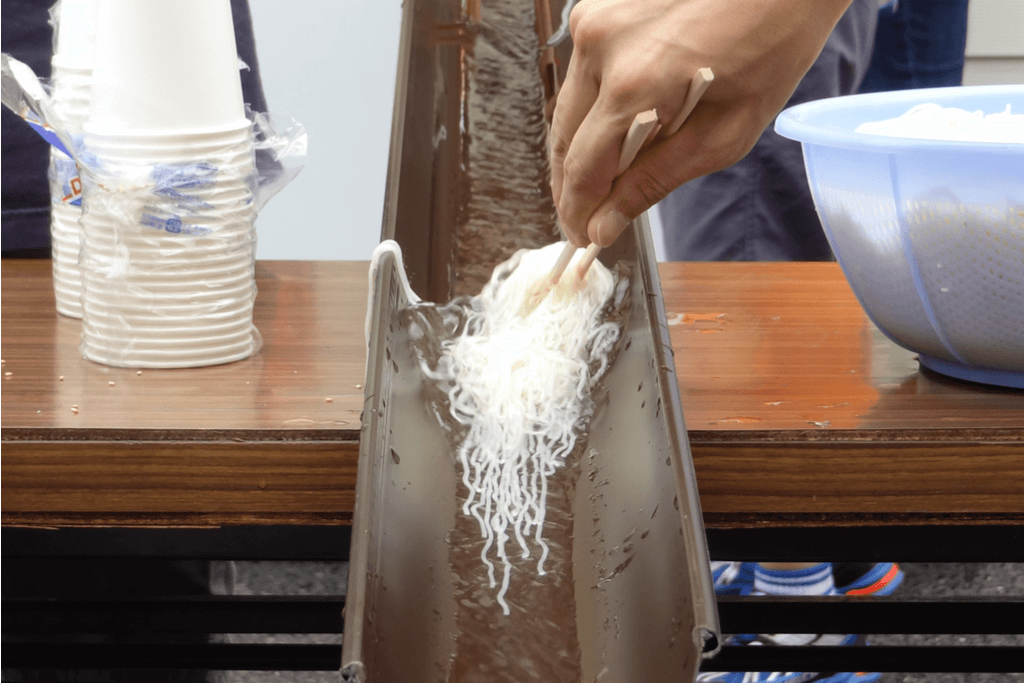
Hirobun: The Best Place to Enjoy Flowing Noodles
If you don’t have enough motivation to prepare nagashi Somen yourself due to the process being too complicated, there are also many nagashi somen restaurants all over Japan. The most popular one is Hirobun – located in the town of Kibune in the northern mountains of Kyoto. Here, you can enjoy the view of the flowing waterfall while enjoying a meal upstream of the Kibune River.
At Hirobun, you will experience a form of dining called “Kawakodo,” meaning a balcony will be built just above the river for the diners. However, weather conditions have a considerable influence on Kawakodo, so the restaurant will postpone or not take nagashi somen reservations if the weather is bad when it rains or if the Kibune River is flooded. If it rains at 10 a.m., Kawakodo will be canceled, so if you plan to go to Hirobun, please watch the weather forecast ahead of time!
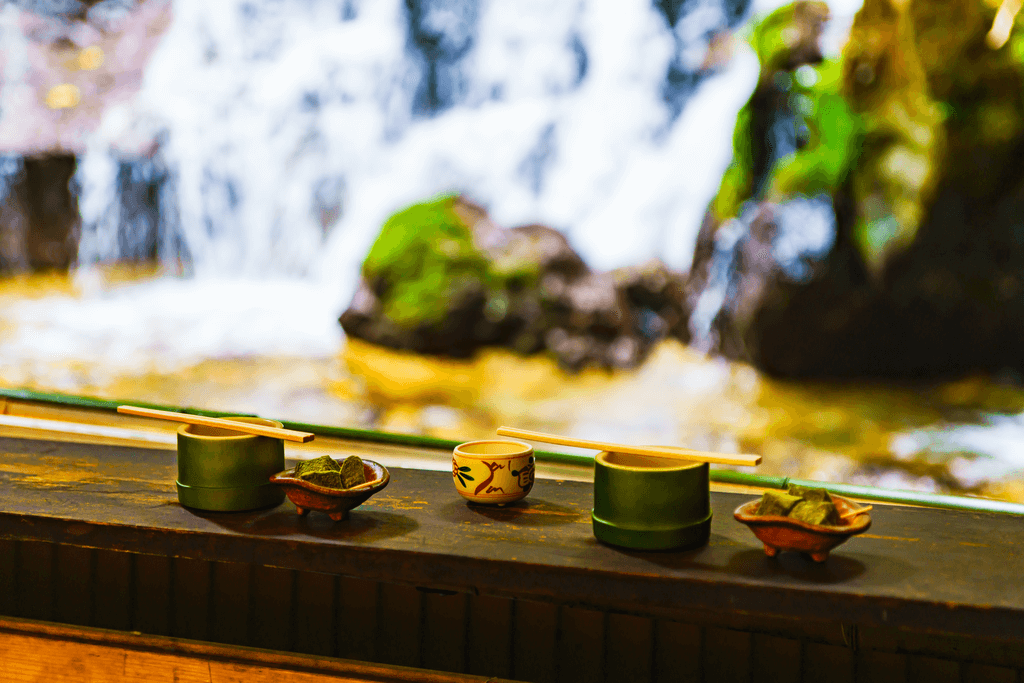
Nagashi somen is also only limited to serving here from May to the middle of October. The price of enjoying nagashi on the Kibune River is pretty reasonable – about 1,500 yen (tax included). Come and try the unique nagashi somen noodle experience at Hirobun restaurant at least once when you come to Kyoto!
Nagashi somen is truly a dish that embodies the Japanese people’s love of both frugality and worldly enjoyment of food. So, take the chance to experience it for a taste of Japanese culture.
Have you ever had the chance to experience this unique way of eating somen? Share your thoughts in the comments below!

Discover authentic flavors with Sakuraco
Get Sakuraco 

Discover authentic flavors with Sakuraco
Get Sakuraco 
Related Articles

Hatsumode: Why Is It Japan’s Most Important Tradition?
Hatsumode is the first visit to a shrine or temple in the New Year in Japan, and it is one of the country’s most important traditions. Every year, millions of people participate, demonstrating the profound connection between this custom and daily life.

Japanese Fish Bait: The Beautiful Art of Kebari
Kebari are traditional hand-tied flies used for freshwater fishing in Japan, especially in mountain streams where small insects form the main diet of native fish. Instead of bright plastic lures, kebari use feathers, thread, and natural materials to create subtle movements in the water.

Japan Holidays Guide: Relax, Explore, and Delight in Festive Fun
As the year draws to a close, everywhere buzzes with preparations for the holidays, and Japan is no exception. Despite the cold winter weather, you can feel warmth in the scenery, decorations, and festive activities across the country. Let’s explore the unique experiences of holidays in Japan that many people dream of enjoying at least once in their lifetime!
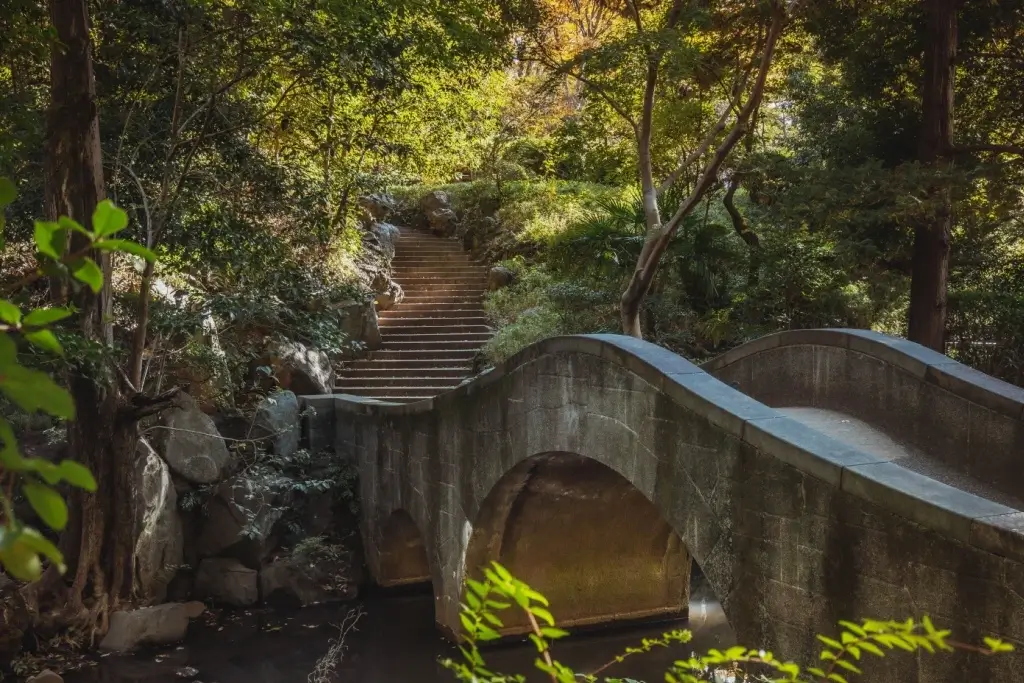
Tokyo Gardens: Five Beautiful Traditional Japanese Gardens to Visit
Tokyo gardens offer a relaxing escape for visitors looking to get a breath of fresh air. However, Tokyo has more than just the typical gardens we see in the West. Let’s explore five traditional Japanese gardens and what makes them unique!



